Discover the Magic of Claypot Cooking
Table of Contents
Experience the Magic of Claypot Cooking
Are Claypots suitable for cooking?
Not only is Claypot cooking safe, but it also preserves the nutrients and minerals in the food. Claypots are natural and organic products.
Cooking is more than a necessity; it is an art that has evolved over the centuries, using different materials, methods, and techniques to create all kinds of culinary creations. One of these ancient methods that continues to fascinate chefs worldwide is using clay pots. These simple vessels made of natural clay have the unique ability to transform ordinary ingredients into extraordinary dishes. Let’s explore the world of clay pot cooking and its history and characteristics. Get tips and techniques for starting your clay pot culinary journey.
History of Claypot Cooking
We can trace the history of cooking in clay pots back to ancient civilizations. Early humans used clay vessels for both cooking and storing food. Over time, these rudimentary pots evolved into more sophisticated forms that reflected advances in craftsmanship. Ancient cultures worldwide used clay pots to prepare nutritious meals. Whether it’s a Moroccan tagine, Chinese sand pot, or German Römertopf, these vessels have shaped cuisines worldwide.

A culinary tradition
People value this traditional cooking method for its unique taste and aroma. Due to the type of clay used, each has different properties that contribute to the cooking process.
Clay pots offer a variety of benefits that have kept them relevant across generations:
Improved flavor: The porous nature of the clay allows for slow and even heat distribution, resulting in well-cooked food with enhanced flavor.
Healthier cooking: Cooking in clay pots often requires less oil as the porous surface of the pot retains moisture and prevents food from sticking, making cooking healthier.
Aesthetic appeal: The rustic charm of clay pots adds a touch of authenticity to the dining experience and enhances the visual aspect of the meal.
Nutrient preservation: Slow cooking in the clay pot preserves the nutritional value of the ingredients and retains essential vitamins and minerals.
Eco-friendly: Clay pots are made from natural materials and are biodegradable, making them an environmentally friendly choice.
Types of Claypots
There are several different types of clay pots, each with its own characteristics and cooking properties. Let’s look at a few types:
Earthenware: These pots are made from natural clay and are often unglazed. They offer excellent heat distribution and moisture retention, but they must be fired before use to prevent cracking and improve their durability.
Clay: Earthenware clay pots are fired at higher temperatures, making them more durable, sturdy, and less likely to crack.
Fireclay: Fireclay pots are designed for cooking at high temperatures, making them suitable for baking and roasting.
Porcelain: These pots are coated with a layer of glaze, making them ideal for cooking acidic foods. They are non-porous and easy to clean.
Tips for Beginners
Before you jump into your clay pot cooking adventure, keep these essential tips in mind:
Choosing the right claypot: Choose a pot suitable for what you want to cook. Choose a pot made of high-quality clay with no cracks or bumps. A well-made pot will ensure consistent cooking results and durability.
See > A Guide to Clay Cooking Pots.
Seasoning your clay pot:
To improve its performance, season it before using it for the first time, especially if it is unglazed. Soak the pot in water overnight for a few hours, then let it air dry and coat the clay pot with any cooking oil. Let it air dry again for a few hours until it absorbs all the oil. Then, your pot is ready.
Pre-soak the clay pot: Always soak your clay pot before using it. This step will prevent sudden temperature changes that could cause cracks or breakage.
Cook on low heat: Use low to medium heat settings to prevent the clay pot from cracking. Clay pots are excellent heat retainers.
Avoid overloading: Don’t overload the pot with ingredients. It will distribute the heat evenly and allow the flavors to meld well. Choose a clay pot appropriate for the amount of food you are preparing.
Use wooden utensils: Opt for utensils made of wood or silicone to avoid scratching the pot’s surface. Metal utensils can damage the integrity of the clay.
Cool naturally: Allow the clay pot to cool naturally before washing. Running a hot pot under cold water can cause it to crack.
Cleaning: Do not use soap or chemicals on unglazed or partially glazed clay pots, as they are highly porous. If you are concerned about the growth of harmful bacteria, you can heat the pots in a dry oven for about 30 minutes instead to kill any bacteria.
Embracing Tradition and Flavor
The journey of clay pot cooking is not only educational but also incredibly rewarding. By following the tips and techniques, you can confidently embark on a flavorful adventure that spans centuries and cultures.
In Sri Lanka, meals are made in clay pots and are very easy to prepare. It is an organic and environmentally friendly way of cooking.
Traditional cooking in Sri Lanka.
Here are some recipes to try for authentic and traditional clay pot dishes. Choose your favorite dishes.
Clay Pot Bread Recipe (No Knead)
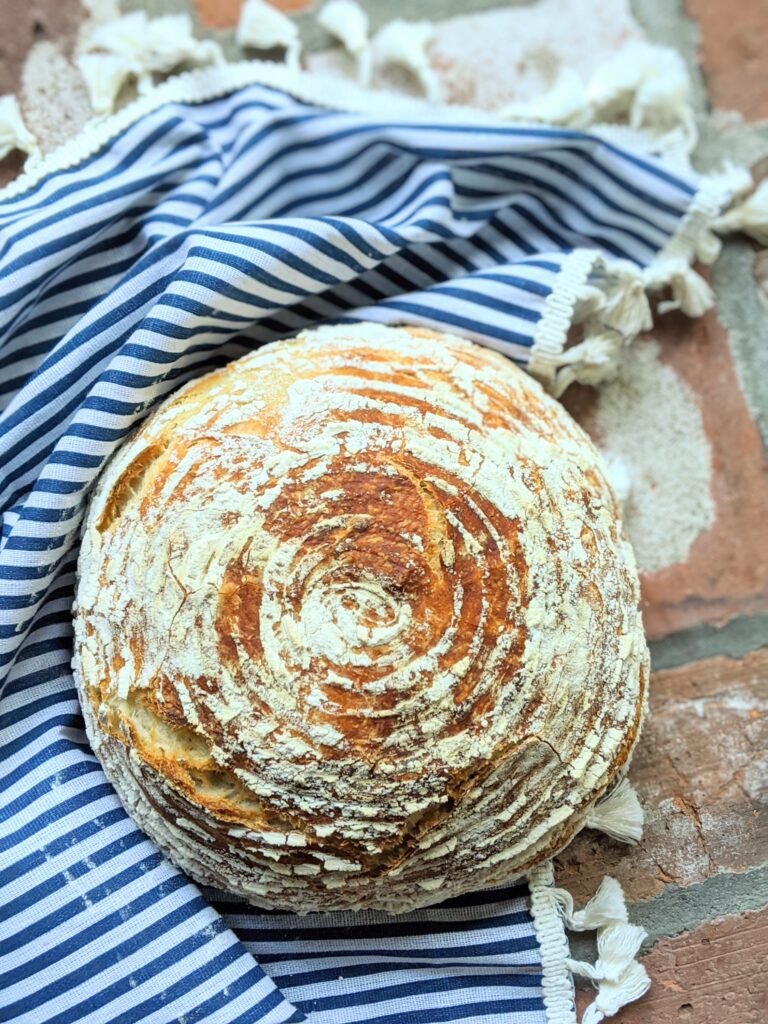
This clay pot bread recipe is a simple, delicious, and easy bread to bake at home! It’s warm, crusty, and great for breakfast or brunch.
Hong Kong-Style Vegan Clay Pot Rice
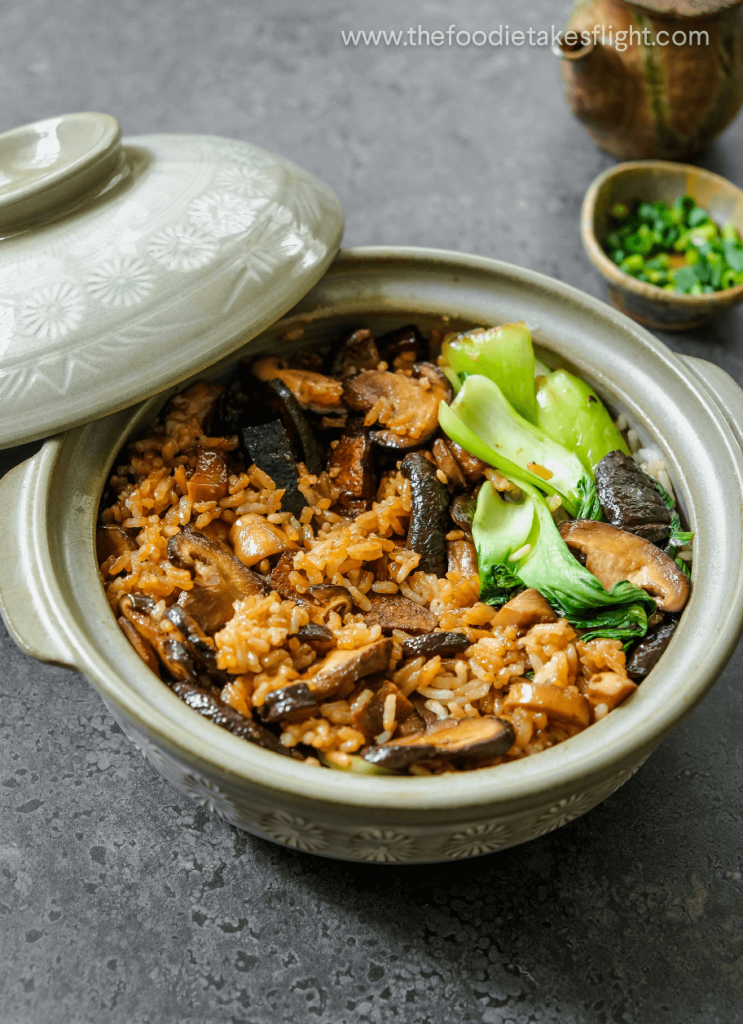
This Hong Kong-Style Clay Pot Rice is one of those dishes I can’t get enough of.
Kiri Hodi – Sri Lankan Coconut Milk Curry
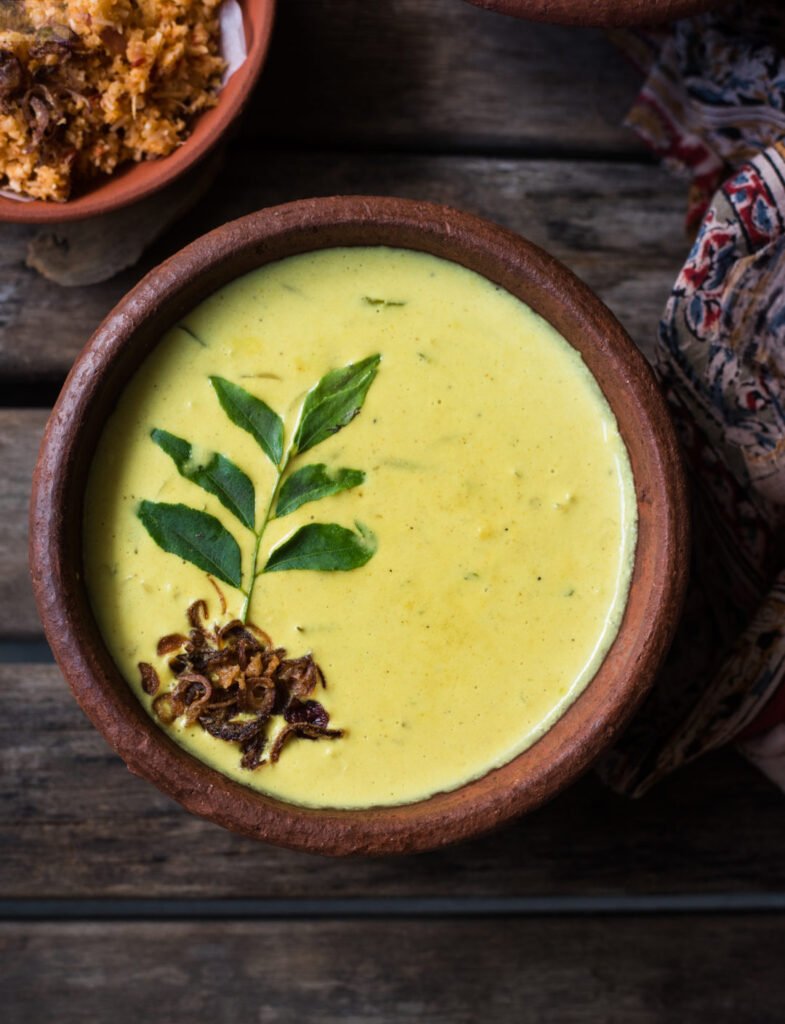
Kiri means milk, and Hodi means curry. This simple yet versatile curry is served as an accompaniment to Kottu Roti, steamed rice, hoppers, string hoppers, and much more.
Sri Lankan Cashew Curry
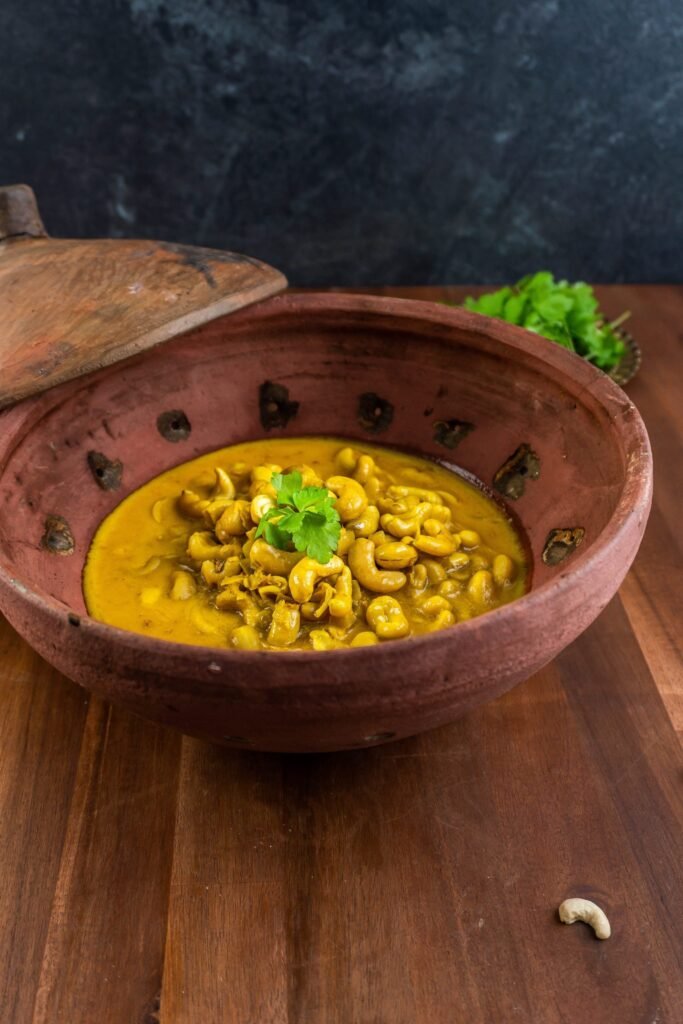
Have you ever been to Sri Lanka? It is an absolutely magical place. From food to culture, to nature, to wild animals – there is something there for everyone. I fell in love with this island for several reasons, but of course, also because of the food. And today, I wanted to bring a small piece of that to the blog with this Sri Lankan Cashew Curry.
Sri Lankan Tempered Potato Curry Recipe
Enjoy this easy Sri Lankan Tempered Potato Curry recipe with any bread for a very cheap and humble meal.
Village Style Claypot Curry
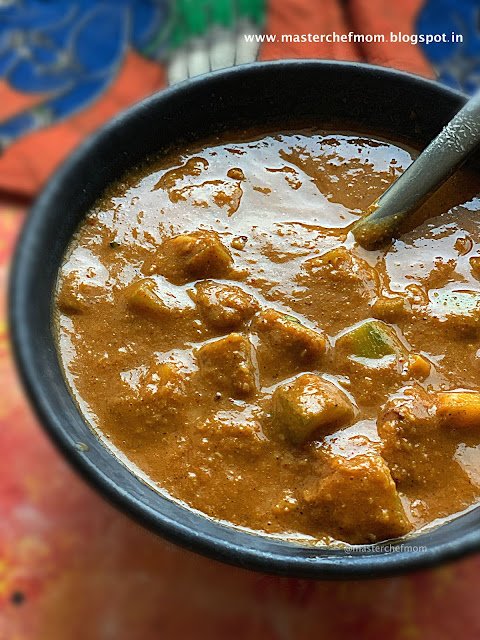
The clay pots retain the nutritive value of food, and the food cooked in clay pots is much tastier than when cooked in any other cookware. Clay pots are economical and also easy to maintain.
Vegan Clay Pot Rice (Bao Zai Fan)
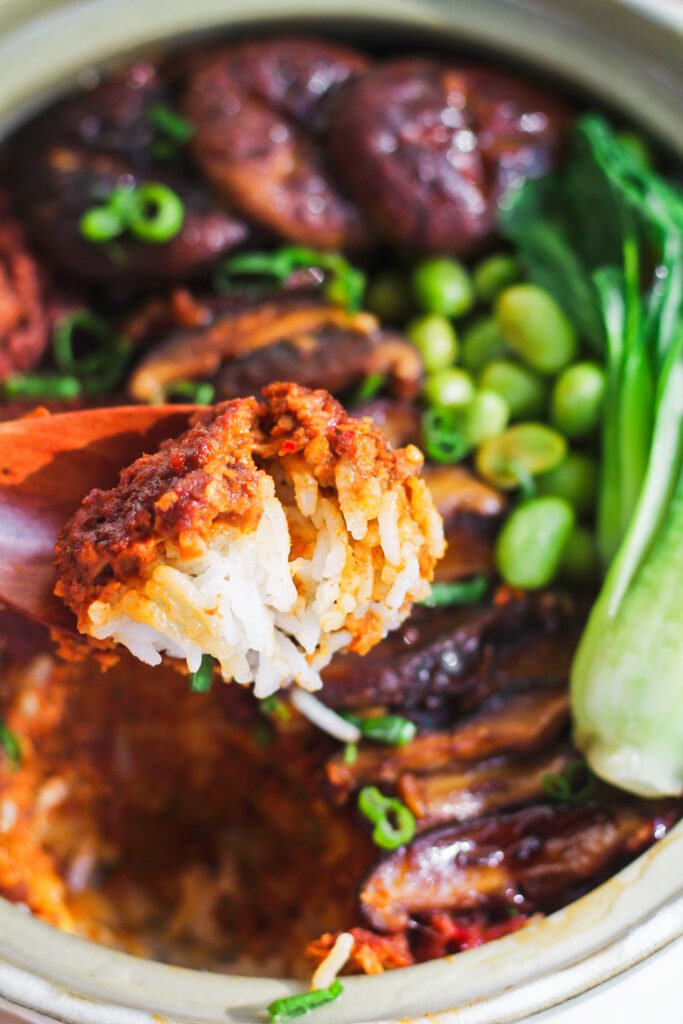
Patience is key in this recipe, medium-low heat and low heat only, and you’ll be rewarded with the most aromatic and beautifully cooked rice in your life plus the golden, crunchy surprise at the bottom, look at that crispy layer!
Claypot Tofu (20 Mins)
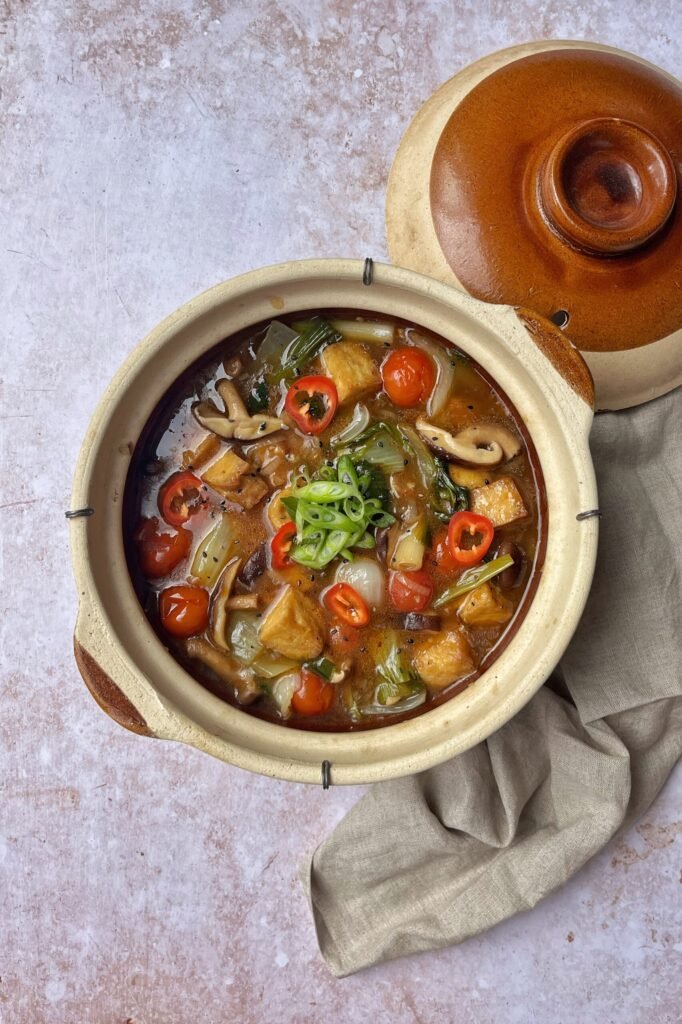
This Claypot Tofu recipe takes around 20 minutes to make and is perfect to warm you up on a cold day. It’s vegan, full of veggies, and packed with flavor.
Enjoy the Claypot cooking journey.
See also > Traditional And Healthy Alternatives To Aluminum Foil
and > Sri Lankan Cuisine: A Delicious Culinary Adventure




